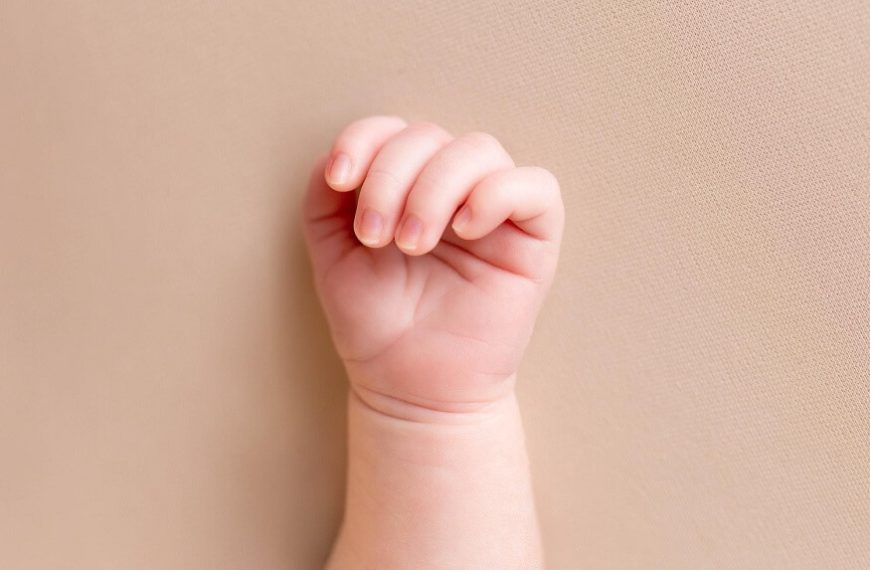In the miraculous journey of growth, every little action of a baby is a leap towards development. One of the key milestones in this journey is the development of the palmar grasp reflex. This seemingly simple action of a baby curling their tiny fingers around an object has profound implications for their overall development. In this blog, we’ll explore the importance of the palmar grasp reflex in babies, its role in their growth, and how to nurture this vital skill effectively.
What is the Palmar Grasp Reflex?
The palmar grasp reflex is an instinctive movement seen in infants, where their fingers close around an object placed in their palm. This reflex is present right from birth and is a critical part of a baby’s motor skill development. It’s fascinating to see how this involuntary action gradually transforms into a voluntary and controlled grasp as the baby grows.
Why is the Palmar Grasp Reflex Important?
- Foundation for Motor Skills:
- Brain Development:
- Exploration and Learning:
- Emotional Bonding:
The palmar grasp reflex is not just a cute action; it’s the cornerstone of your baby’s motor development. This reflex initiates the journey towards fine motor skills, crucial for tasks like writing, buttoning shirts, or playing musical instruments. As babies practise this grasp, they strengthen their hand muscles and improve coordination, setting the stage for more complex hand movements.
This reflex is a testament to the intricate connection between physical movements and brain development. Each time a baby grasps, neural pathways are stimulated, enhancing the areas responsible for motor control and sensory processing. This activity lays a solid foundation for cognitive abilities such as problem-solving and spatial awareness.
The world is a mosaic of textures, shapes, and weights, and the palmar grasp is a baby’s first tool to explore this diversity. Through grasping, babies discover and learn about their environment, which is critical for sensory integration and cognitive development.
The power of a baby’s grasp transcends physical touch, forging deep emotional connections. This bonding is vital for emotional security and social development, shaping the baby’s ability to form relationships in the future.
Palmar Grasp Reflex in Babies
The palmar grasp reflex is most prominent during the first few months of life. Typically, this reflex begins to fade around 5-6 months of age, giving way to more deliberate and controlled movements. This transition is a significant indicator of healthy neurological and physical development.
Grasping Milestones
As your baby grows, their grasp evolves through various stages:
- Birth to 3 Months:
- 3 to 6 Months:
- 6 to 9 Months:
- 9 to 12 Months:
The reflexive grasp where the baby instinctively grips anything placed in their palm.
The baby starts to voluntarily grasp objects and explore them with their hands.
Improved hand-eye coordination allows the baby to reach for objects more accurately.
The pincer grasp develops, where the baby uses the thumb and forefinger to pick up small objects.
Nurturing the Palmar Grasp
Fostering this vital skill involves simple yet effective strategies:
- Provide Safe Objects to Grasp:
- Encourage Practice:
- Sensory Play:
- Tummy Time:
- Clapping Games:
Offer toys that are easy to hold, safe, and interesting for the baby.
Regularly encourage your baby to reach for and grasp objects.
Engage in activities that stimulate the baby’s senses, like playing with different textures.
This helps in strengthening the muscles necessary for reaching and grasping.
Simple games like pat-a-cake can be great for developing hand coordination.
When to Seek Help
Every baby develops at their own pace, but there are certain indicators that might suggest the need for professional input:
- Delay in Grasp Development:
- Absence of Engagement in Object Exploration:
- Inflexible or Limp Hand Movements:
- Seeking assistance early can have a profound impact, making it wise to consult with a paediatrician or an early intervention specialist if any worries arise. Keep in mind that timely identification and support play a pivotal role in effectively addressing developmental hurdles.
If your baby is not showing signs of developing the palmar grasp by the expected age milestones, it might be worth discussing with a paediatrician.
Demonstrated disinterest or difficulty in extending for and holding objects may suggest potential developmental delays or underlying concerns.
Should you observe your infant’s hands displaying excessive stiffness or limpness, this might indicate the presence of neurological or muscular issues.
The Role of Nutrition in Developing Motor Skills
When it comes to a baby’s motor development, nutrition is crucial. Sufficient consumption of vital nutrients such as vitamins, iron, and omega-3 fatty acids is required for the development of the brain and muscles. These nutrients support the neural and muscular functions necessary for the development of motor skills like the palmar grasp. Your kid will receive these essential nutrients through a varied, well-balanced diet. Always seek the advice of a paediatrician to determine your baby’s unique nutritional requirements.
The Impact of Technology on Early Motor Development
In today’s digital age, it’s essential to consider the impact of technology on a baby’s motor development. Excessive screen time can limit a baby’s opportunity for physical activities, impacting the development of skills like the palmar grasp. Physical play and interaction with tangible objects are critical for developing fine motor skills and hand-eye coordination. Balancing technology with traditional play, providing opportunities for hands-on activities, and limiting screen time are key to supporting your baby’s overall motor development.
In conclusion, the palmar grasp reflex is more than just a milestone; it’s a window into your baby’s evolving world. As parents and caregivers, recognizing and nurturing this reflex is a step towards empowering our little ones on their journey of growth and discovery. Let’s cherish each grasp, each touch, as they lead our children to new abilities and deeper connections. Embrace these moments, for they lay the foundation of a lifetime of learning and loving. And remember, every small hand that reaches out today is reaching towards a future filled with endless possibilities.
At EuroKids, we understand the importance of early childhood development. Our curriculum is designed to nurture every aspect of a child’s growth, including motor skills, cognitive abilities, and emotional well-being. Join us at EuroKids and be a part of an enriching journey that prepares your child for a bright future. Because at EuroKids, we believe every small hand has the potential to shape a better tomorrow.
















